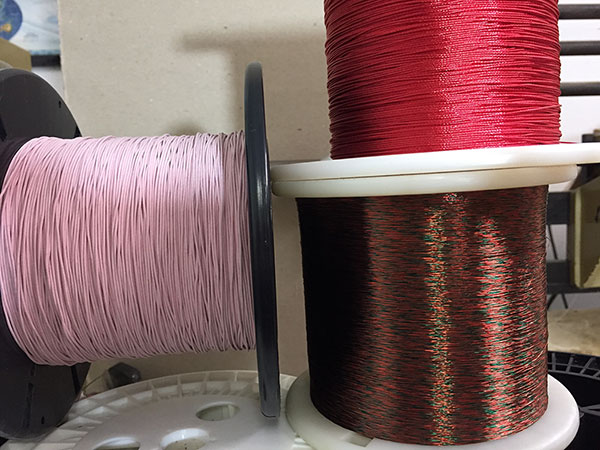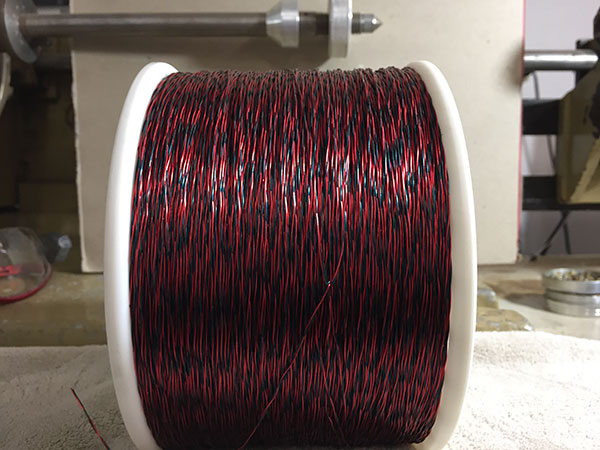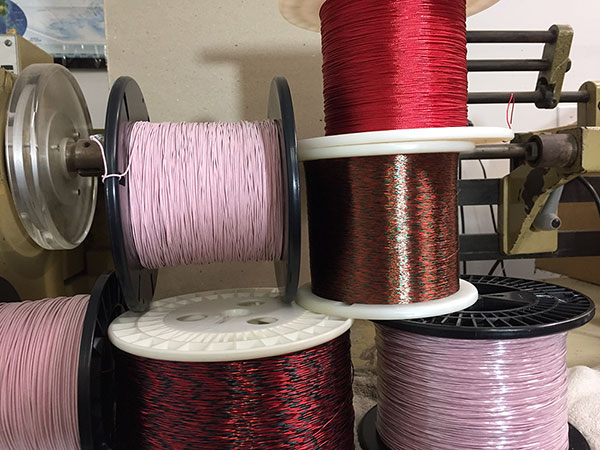What is Litz Wire?
The term “Litz wire” is derived from the German word “litzendraht” meaning woven wire. It is contructed of individually insulated magnet wires either twisted or braided into a uniform pattern.
Litz wire sizes are often expressed in abbreviated format as follows:
N / XX, where N = the number of strands and XX = the AWG (American Wire Gauge) size of each strand. For example a typical size of litz wire might be expressed as:
“20/30” or 20 strands of 30 AWG. After the size follows the insulation and serving/jacketing options as will be described below.


Insulations
Here we are describing the type of insulating enamel on each strand of magnet wire. The most common insulations for litz are *Single* & *Heavy* build Polyurethane-Nylon meeting the NEMA MW 80-C industry standard for magnet wire. Other insulations types & builds are possible so please inquire. You can find additional information on the various enamels available on our web site under Magnet Wire
Twisting Tightness:
The standard twist configuration is 12 twists per foot (TPF) on most litz wires however non-std twisting is available on request. Sometimes the twisting is expressed as twist per inch (TPI). The maximum # of twists in a given length is limited by the size of the strands. Generally speaking, even in the smallest wire diameters, the highest TPF possible is 300 – 360 TPF.
Served vs Unserved
Litz wire may be quoted as “SERVED” & “UNSERVED”. SERVED simply means that the entire litz construction is wrapped with a nylon textile or yarn for added strength and protection. Another option is to have the litz construction jacketed with FEP *TEFLON ™ or PVC instead of the nylon serving. Typical teflon thickness is .005″ wall up to .015″. *TEFLON is a tradename of Dupont Corp.
Why Use Litz Wire?
Litz construction is designed to minimize the power losses exhibited in solid conductors due to “skin effect”. Skin Effect is the tendency of radio frequency current to be concentrated at the surface of the conductor. Litz constructions counteract this effect by increasing the amount of surface area without significantly increasing the size of the conductor. Generally speaking, constructions composed of many strands of finer wires are best for the higher frequency applications. Polyurethane-Nylon is the film most often used for insulating individual strands because of its solderability. However, you may feel free to inquire about other higher temperature insulations as well.

Frequency vs. AWG Strand Size
All Values in KHz
- 1 To 10.0 – 30 AWG
- 10 To 50.0 – 33 AWG
- 50 To 100.0 – 36 AWG
- 100 To 200.0 – 38 AWG
- 200 To 400.0 – 40 AWG
- 400 To 800.0 – 42 AWG
- 800 To 1600 – 44 AWG
- 1600 To 3200 – 46 AWG
- 3200 To 5000 – 48 AWG
